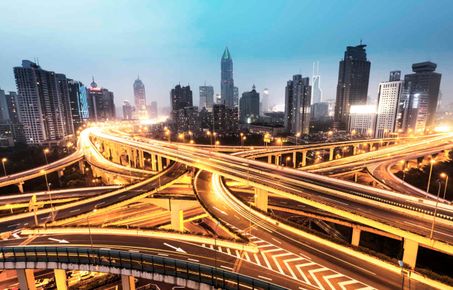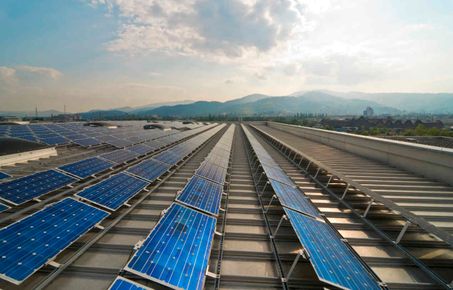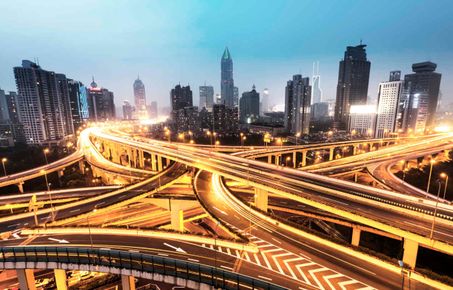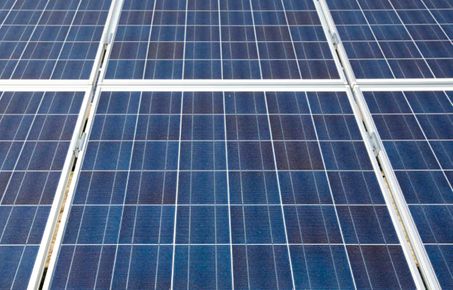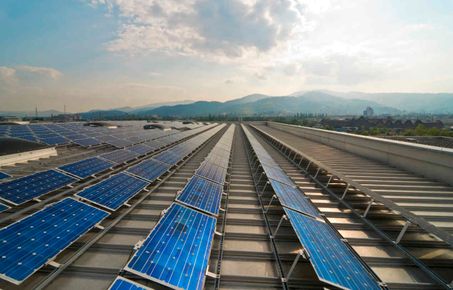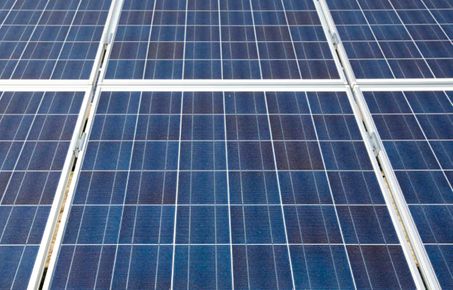| A global network of conceptual groundwater models |
Dr Christopher Jackson |
British Geological Survey |
| Understanding the role of phytochelatins in detoxifying toxic metal pollutants in invertebrate species |
Professor David Spurgeon |
Centre for Ecology and Hydrology |
| Developing new UAV-based survey approaches for monitoring tree and soil health indices in SE Asian oil palm plantations |
Dr Paul Scholefield |
Centre for Ecology and Hydrology |
| Development of viable business models for CCS and GGR |
Dr Niall Mac Dowell |
Centre for Environmental Policy |
| Risk communication and messaging around UK plant health: an investigation focussed on Xylella fastidiosa in the UK |
Professor Clive Potter |
Centre for Environmental Policy |
| Understanding hydrological uncertainties for creating a climate resilient society |
Dr Bhopal Pandeya |
Centre for Environmental Policy |
| Institutions, Governance and Policy for Addressing Wildfire Challenges in a Changing Global Environment |
Dr Yiannis Kountouris |
Centre for Environmental Policy |
| Technological change in agricultural systems and its impacts on sustainable development and climate action |
Dr Jeremy Woods |
Centre for Environmental Policy |
| Explaining the spread of biodiversity conservation initiatives |
Dr Morena Mills |
Centre for Environmental Policy |
| From waste to raw material: Chemical recycling of plastic waste |
Dr Roberto Rinaldi |
Chemical Engineering |
| Sustainable Zero-Carbon Solar Heating, Cooling and Power in Urban and Off-Grid Environments |
Professor Christos N. Markides |
Chemical Engineering |
| Advanced Membranes for Carbon Capture and Clean Water |
Dr Qilei Song |
Chemical Engineering |
| High performance sustainable resins from lignin |
Professor Jason Hallett |
Chemical Engineering |
| Fuelling the Future from Carbon Dioxide: Novel strategies for the catalytic hydrogenation of CO2 |
Dr Andrew Ashley |
Chemistry |
| New Routes for the Chemical Remediation of CO and CO2 |
Dr Mark Crimmin |
Chemistry |
| Azoheteroarenes: Next-generation solid-state solar thermal fuels for heat release applications |
Professor Matthew Fuchter |
Chemistry |
| Can buildings purify polluted air? Developing solar-activated coatings that purify the air we breathe |
Dr Andreas Kafizas |
Chemistry |
| Impact of soil erodibility on resilience of UK flood protection infrastructure |
Professor Catherine O'Sullivan |
Civil and Environmental Engineering |
| Modelling global wetland dynamics under a changing climate |
Dr Athanasios Paschalis |
Civil and Environmental Engineering |
| New rock mechanics models for excavation, mining and geohazards |
Dr Emilio Martínez Pañeda |
Civil and Environmental Engineering |
| Anthropogenic heat uptake by the oceans |
Dr Ali Mashayek |
Civil and Environmental Engineering |
| Climate Change Adaptation: Role of Natural Ecosystems |
Dr Ioannis Karmpadakis |
Civil and Environmental Engineering |
| Metabolism and ultimate fate of persistent synthetic organic chemicals in the economy and environment |
Dr Rupert J. Myers |
Civil and Environmental Engineering |
| Continuous simulation of groundwater supply yields: development and evaluation of numerical, statistical and machine learning methods |
Professor Adrian Butler |
Civil and Environmental Engineering |
| Data and model-based analysis of the risk of groundwater flooding to urban wastewater infrastructure |
Dr Ana Mijic |
Civil and Environmental Engineering |
| Design optimisation and data assimilation for desalination outfalls |
Dr John Craske |
Civil and Environmental Engineering |
| Aviation and Climate Change: Climate Impact of Contrails and Aviation-Induced Cirrus |
Dr Marc Stettler |
Civil and Environmental Engineering |
| Observing urban metabolism through crowd-sourced stocks and flows data |
Dr Rupert J Myers |
Civil and Environmental Engineering |
| Local earthquake analysis to reveal mud-volcano plumbing systems and slow slip mechanisms along the Hikurangi subduction zone, New Zealand |
Dr Rebecca Bell |
Earth Science and Engineering |
| Validating Earthquake Hazard Models For Critical Engineered Structures Using Geologic Data And Cosmogenic Isotopes |
Dr Dylan Rood |
Earth Science and Engineering |
| Using Cosmogenic Surface Exposure Dating to Reconstruct Late-Holocene Glacier and Climate Stability to Determine Precedence for Recent Declines in Snowpack and Water Resources in the American Pacific Northwest |
Dr Dylan Rood |
Earth Science and Engineering |
| The importance of glaciated environments for seawater chemistry and the global carbon cycle – a case study from Greenland |
Professor Tina van de Flierdt |
Earth Science and Engineering |
| Understanding Modern Biogeochemical Cycles in the context of the international GEOTRACES project – Lead, cadmium, neodymium |
Professor Tina van de Flierdt |
Earth Science and Engineering |
| Tectonics of the North America/South America plate boundary |
Professor Jenny Collier |
Earth Science and Engineering |
| Biodiversity and the Evolving Earth: New Data, New Methods, New Insights |
Dr Gareth Roberts |
Earth Science and Engineering |
| Understanding how serpentinization affects marine magnetic anomalies |
Dr Adrian Muxworthy |
Earth Science and Engineering |
| Multi-parameter geophysical imaging and interpretation of magmatic systems |
Professor Joanna Morgan |
Earth Science and Engineering |
| High resolution 3D imaging of an oceanic core complex: interaction of magma, water and faults on the mid-Atlantic ridge |
Dr Michele Paulatto |
Earth Science and Engineering |
| Multi-scale characterization of water flow in submarine hydrothermal systems |
Dr Michele Paulatto |
Earth Science and Engineering |
| Sediment flux from the continents and carbon sequestration in time and space |
Professor Peter Allison |
Earth Science and Engineering |
| Tectonics from topography in Central Greece: decoding the history of fault growth and landscape evolution in the Corinth Rift |
Dr Alexander Whittaker |
Earth Science and Engineering |
| Submarine channels, structural deformation and sediment delivery to the deep ocean |
Dr Lidia Lonergan |
Earth Science and Engineering |
| Structure and evolution of the African plate from geophysical data |
Professor Saskia Goes |
Earth Science and Engineering |
| Understanding how subduction has shaped Circum-Pacific tectonics using 3D numerical models |
Professor Saskia Goes |
Earth Science and Engineering |
| Developing a quantitative framework for the biogeochemistry of trace elements and isotopes in the ocean |
Dr Yves Plancherel |
Earth Science and Engineering |
| Fingerprinting the influence of performance biases in climate and ocean models on climate model simulations |
Dr Yves Plancherel |
Earth Science and Engineering |
| Ice and Fire: Investigating Links between Mantle Dynamics and Ice Sheet Stability |
Dr Fred Richards |
Earth Science and Engineering |
| The evolving jigsaw puzzle: origins, diversity, modifications and development of skull sutures |
Dr Arkhat Abzhanov |
Life Sciences |
| Optimising the recovery of degraded tropical rainforest logging estates |
Professor Robert Ewers |
Life Sciences |
| Comparative genomics, speciation and sustainable palm futures |
Professor Vincent Savolainen |
Life Sciences |
| Distribution modelling of European forest mycorrhizas |
Professor Martin Bidartondo |
Life Sciences |
| ArcticBuzz: bumblebee community responses to climate change in Lapland |
Dr Richard Gill |
Life Sciences |
| Effect of mycorrhizas on the establishment of native woody species |
Professor Martin Bidartondo |
Life Sciences |
| Conservation of marine phylogenetic diversity in the face of global change |
Dr James Rosindell |
Life Sciences |
| Phenology shifts, gut microbiomes, and fitness consequences |
Dr Julia Schroeder |
Life Sciences |
| Synthetic ecology: Simple rules for building complex miniature ecosystems |
Professor Thomas Bell |
Life Sciences |
| Mapping the hidden arthropod biodiversity of UK soils using high-throughput sequencing |
Professor Alfried Vogler |
Life Sciences |
| How can microbiomes and soil biodiversity support food security? |
Dr Anne D. Jungblut |
Life Sciences |
| Bacteria-virus interactions in a warming world |
Dr Emma Ransome |
Life Sciences |
| How social stratification in urban admixing populations shaped their genetic structure: novel insights from population genomics and deep learning |
Dr Matteo Fumagalli |
Life Sciences |
| The role of hydrodynamics in mediating effects of climate change on ecosystem stability and functioning |
Dr Samraat Pawar |
Life Sciences |
| Beaver reintroductions: quantifying ecosystem impacts |
Professor Guy Woodward |
Life Sciences |
| Gulf stream's role in regulating the climate system |
Professor Pavel Berloff |
Mathematics |
| Next generation atmosphere modelling |
Professor Colin Cotter |
Mathematics |
| Niche evolution and trophic diversity in birds and mammals |
Professor Andy Purvis |
Natural History Museum |
| Reconstructing skull evolution of fossil crown birds |
Professor Anjali Goswami |
Natural History Museum |
| To warm or not to warm: Exploiting far-infrared measurements of cirrus cloud in support of the FORUM satellite mission |
Dr Helen Brindley |
Physics |
| Gulf Stream forcing of mesoscale instabilities and their effect on downstream weather and climate |
Dr Arnaud Czaja |
Physics |
| Processes affecting tropical cyclone landfall |
Professor Ralf Toumi |
Physics |
| The role of peat fires in shaping future atmospheric composition, the carbon cycle and climate |
Dr Apostolos Voulgarakis |
Physics |
| Understanding energy and resource costs of low-carbon fuel technologies in transportation and energy storage |
Professor Jenny Nelson |
Physics |
| Air pollution: Sources and sinks of carbon monoxide in the atmosphere |
Dr Heather Graven |
Physics |
| Why does climate sensitivity depend on forcing? |
Dr Paulo Ceppi |
Physics |
| How does moisture affect the circulation of the atmosphere? |
Dr Paulo Ceppi |
Physics |
| Uniting Museum Collections and Genomics to Trace Emerging Pathogens across the Anthropocene |
Professor Matthew C. Fisher |
School of Public Health |
| The evolutionary history and diversity of sedges in Madagascar |
Professor Isabel Larridon |
Royal Botanical Gardens (Kew) |
| Managing ecosystem services of Andean wetlands for sustainable development |
Dr Carolina Tovar |
Royal Botanical Gardens (Kew) |
| Identifying how and why the Earth’s outgoing longwave energy spectrum has changed over the last decade |
Dr Richard Siddans |
Rutherford Appleton Laboratory |
| Nature-based tourism in a changing climate: costs and benefits for endangered species |
Professor Rosie Woodroffe |
Zoological Society of London |
| What works? Counting badgers to evaluate lethal and nonlethal approaches to bovine TB control |
Dr Marcus Rowcliffe |
Zoological Society of London |
| Developing Environmental DNA techniques as a marine biodiversity monitoring tool in the Indian Ocean |
Dr Chris Yesson |
Zoological Society of London |



